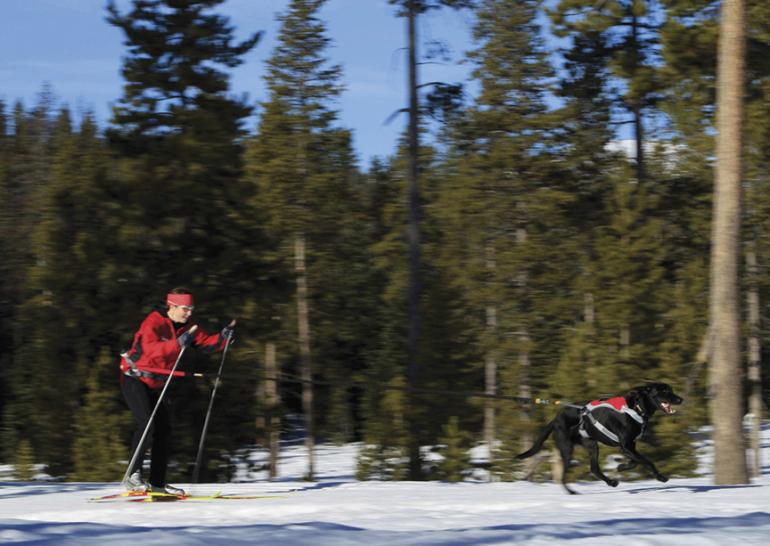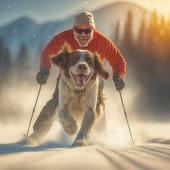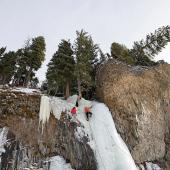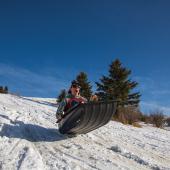Canine Combustion
Now that winter is here, high-energy activities for your dog don’t have to end. Consider taking up skijoring, where two of Bozeman’s favorite things—skiing and dogs—are combined for a team-oriented adventure.
Skijoring is a sport where you actively cross-country ski while your dog pulls you. The result is excellent exercise—both mental and physical—for you and your dog. It takes practice, communication, and training. But according to Josh Sponsler, owner of Good Dog Training & Boarding and an experienced skijorer, zipping past trees in the backcountry while your pup pulls you at full speed is an experience well worth the hours.
“A lot of people think skijoring is just the dog pulling you along, but you still have to ski a lot, especially going uphill,” Sponsler says. “A lot of communication is involved, but once you get it down, it’s a blast. You’re going 25, 30 miles per hour at some points. You’re flying. And your dogs are at full gallop and they have big grins and so do you.”
Skijoring requires an obedient and athletic dog, and a experienced cross-country skier who stays in control. If you already own ski gear, you only need four other items to start skijoring: a properly sized dog harness, a shock-absorbing towline, a harness or belt that fits low around your hips, and a quick release that connects the towline to your harness.
Once your gear is in order, you can begin training. Start out on foot and introduce your dog to wearing the harness. While it’s on, give your pooch lots of praise. After he grows more familiar with the harness, hook on the towline and encourage him to move forward and keep tension on the line. Sponsler says it helps to practice on a downhill slope so there’s a natural, forward momentum.
“It’s really a game of communication,” he says. “You have to be loud, energetic, and not negative. You want the dog to be excited about this. I yell a lot: ‘Let’s go! Come on! Let’s do it!’ So that energy gets into them and they go forward.”
Continue to work with your dog by attaching a light weight, like a sled or small tire, so that he becomes used to pulling, suggests the Pacific Sled Dog and Skijor Association (PSDSA). Use traditional mushing commands such as “hike” to start running; “gee” and “haw” for right and left; “whoa” to stop; and “on by” or “straight ahead” to pass distractions. Remember to stay consistent and positive, and keep training sessions short—under 15 minutes—so that your dog doesn’t get frustrated or bored. After your dog masters the basic tenets of skijoring on foot, begin to practice with your cross-country skis.
Sponsler recommends practicing in areas that aren’t heavily populated and have groomed trails; for example, visiting Hyalite Canyon early in the morning, or joining dog mushers who frequently practice at Mill Creek south of Livingston. Bohart Ranch also allows dog skijoring after 3pm on Wednesday afternoons.
“The dogs really love it. When I show up at Bohart, my dogs freak out. They are so excited,” Sponsler says. “It’s really healthy for them; it works their brains and they have to focus a lot. My dog works hard, trains hard, and goes home and sleeps really well.”
While you can certainly jury-rig a harness yourself, there are a few companies that manufacture them. Our favorite is RuffWear’s Omnijore; check out our review in the Winter 2011-12 issue, p. 51 (digital.outsidebozeman.com).












